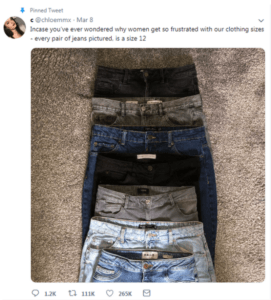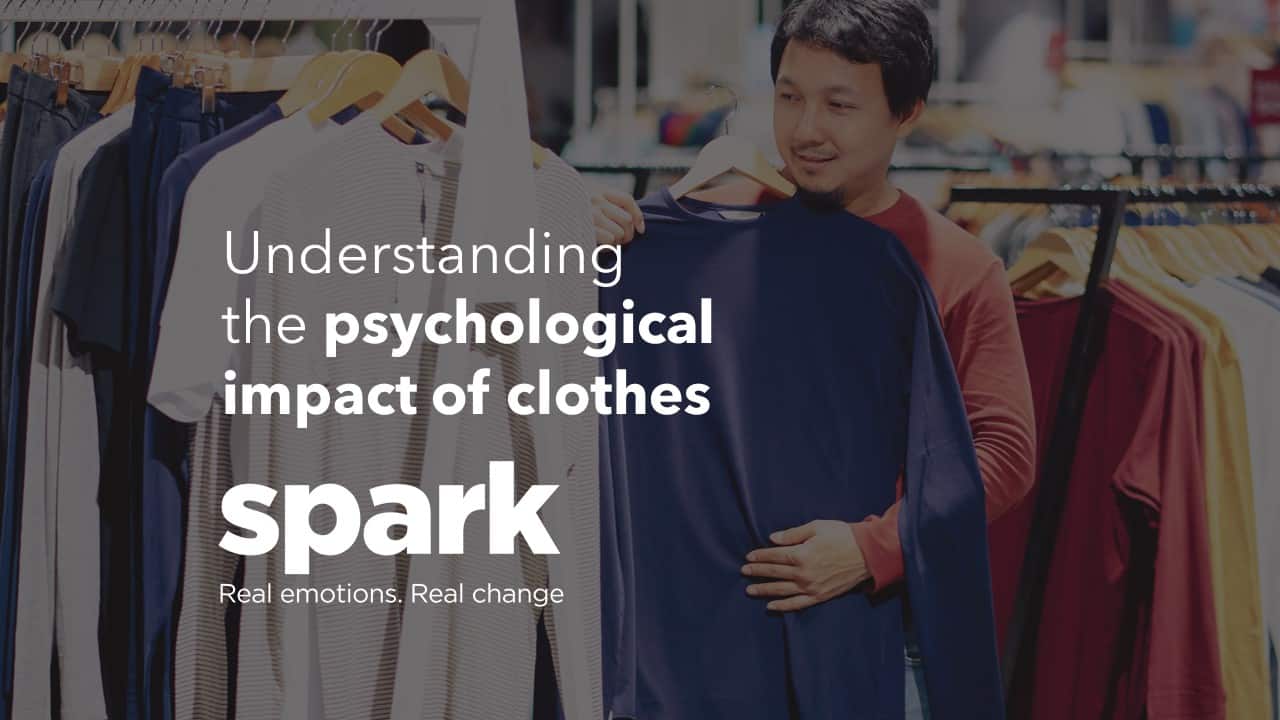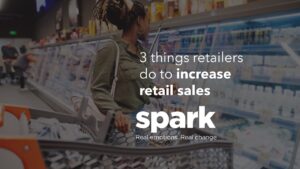In the first few months of 2019 Chloe Martin of Glasgow went through a trial experienced by every woman since the invention of prêt-à-porter: all of her size 12 jeans fit her differently, some barely making it past her hips whilst others were loose. Martin posted a picture of the offending jeans on Twitter and quickly became viral as women around the world shared in this collective annoyance.

Unfortunately, nonstandard clothing sizes are a more prevalent problem than Martin’s viral Tweet leads us to believe. Millions of Google search results are dedicated to this everyday frustration whilst YouTube clothing hauls and clothing retailers have begun using the terms ‘true to size’ and ‘running small/large’ in an effort to address this fashion conundrum that is familiar to many. Inconsistent clothing sizes have also been linked to adverse mental health effects, especially for people struggling with body image, weight issues and eating disorders.
But why are inconsistently sized clothes such an issue?
Since ancient times, clothing has been used to communicate an individual’s cultural, social and personal identity. Fashion not only places us in time and space (e.g. 1980’s London fashion is different to 1930’s Tokyo fashion), it also expresses societal and individual traits pertaining to our gender, ethnicity, sexuality, taste, social group, social class, etc. In essence, we wear what we are.
In 2012 Adam & Galinsky showed this to be true at a cognitive level. Participants wearing a doctor’s lab coat (generally associated with attentiveness and carefulness) performed better on attention tasks than participants wearing a painter’s coat or no coat. They coined it ‘Enclothed Cognition’ and it refers to the effect clothing has on a person’s cognitive processes, beliefs and feelings. Therefore, inconsistent clothing sizes aren’t just fantastically frustrating, but they can also make us perceive our bodies and abilities as different to what they actually are in reality. For example, when our clothes fit well, we feel good and get a confidence boost but when our clothes fit poorly, we experience cognitive dissonance and convince ourselves we are the problem. This in turn affects our cognitive processes, body image, self-worth, etc.

Addressing inadequate practices to improve customer journey and sentiment
Frustration and poor self-concept as a result of shopping certain retailers leads us to avoid said brands in order to escape the negative feelings associated with them. Repeat offenders, as was the case of Abercrombie & Fitch who was criticised for excluding larger women and promoting unrealistic standards of beauty amongst other criticisms, can lead to backlash from consumers worldwide and a destabilization of the brand and its value. Addressing the inconsistency of clothing sizes would remove one of the main pain points in the shopping journey of customers and allow for more positive associations with the brand.
A Barclaycard report indicated that almost half of the amount spent on online clothes shopping ended up being refunded by retailers in 2018. Sizing was the main reason for the returns, with one in 3 shoppers believing the items will be ill-fitting before even trying them on. Standardized sizes would start addressing the biggest burden of online retailers as well as help them move towards a more environmentally friendly business model as 68% of consumers would like to see brands take a stand on environmental, social and political issues.
How can we help?
Understanding your product, having clear and open communications with your consumers, removing or easing pain points on the consumer’s shopping journey and taking steps for the future in the present are actions that apply to any market category, not just the fashion industry. At Spark Emotions, we can help you identify pain points, our team of consumer psychologists are able to really understand the behaviour of your consumers. Get in touch to find out how we can help.
Related articles

Written by Amelia Gavrila, Senior Insights Executive at Spark Emotions.
If you have any questions, feel free to reach out to Amelia via email amelia.gavrila@sparkemotions.com or connect on LinkedIn









